
East Renfrewshire is one of 32 council areas of Scotland. It was formed in 1996, as a successor to the Eastwood district of the Strathclyde region. The northeastern part of the council area is close to Glasgow and many of the council area's northern settlements fall into the Greater Glasgow urban area.
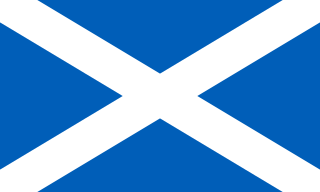
Local government in Scotland comprises thirty-two local authorities, commonly referred to as councils. Each council provides public services, including education, social care, waste management, libraries and planning. Councils receive the majority of their funding from the Scottish Government, but operate independently and are accountable to their local electorates. Councils raise additional income via the Council Tax, a locally variable domestic property tax, and Business rates, a non-domestic property tax.
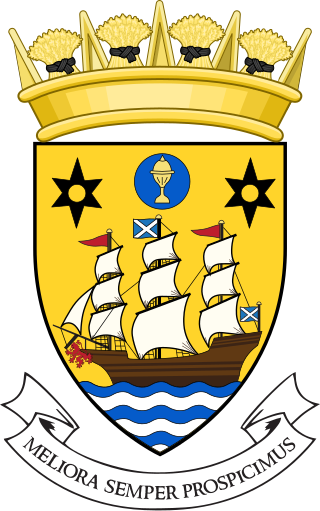
Inverclyde Council is one of the 32 local authorities of Scotland, covering the Inverclyde council area. In its current form the council was created in 1996, replacing the previous Inverclyde District Council which existed from 1975 to 1996.

Scotland has elections to several bodies: the Scottish Parliament, the United Kingdom Parliament, local councils and community councils. Before the United Kingdom left the European Union, Scotland elected members to the European Parliament.

The 2012 Scottish local elections were held on 3 May 2012 in all 32 local authorities. The Scottish National Party (SNP) overtook Labour to win the highest share of the vote, and retained and strengthened its position as the party with most councillors. Labour also made gains, while the Liberal Democrats experienced meltdown, losing over half their seats and falling behind the Conservatives. For the first time since the introduction of the Single Transferable Vote system, the SNP won majority control of 2 councils, from no overall control. Labour also won majority control of 2 councils from no overall control, while retaining majority control over 2 councils.
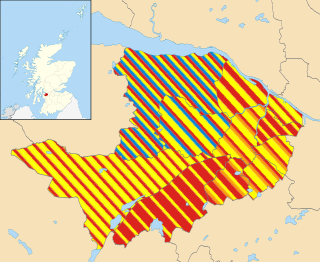
Elections to Renfrewshire Council were held on 3 May 2007, the same day as the other Scottish local government elections and the Scottish Parliament general election. The election was the first one using 11 new wards created as a result of the Local Governance (Scotland) Act 2004, each ward will elect three or four councillors using the single transferable vote system form of proportional representation. The new wards replace 40 single-member wards which used the plurality system of election.
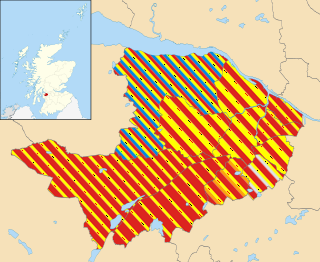
The 2012 Renfrewshire Council election took place on 3 May 2012 to elect members of Renfrewshire Council. The election used the eleven wards created as a result of the Local Governance (Scotland) Act 2004, with each ward electing three or four Councillors using the single transferable vote system a form of proportional representation, with 40 Councillors being elected.
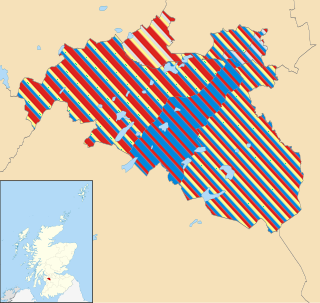
The 2012 East Renfrewshire Council election took place on 3 May 2012 to elect members of East Renfrewshire Council. The election used the six wards created as a result of the Local Governance (Scotland) Act 2004, with each ward electing three or four Councillors using the single transferable vote system a form of proportional representation, with 20 Councillors being elected.

Greater Pollok is one of the 23 wards of Glasgow City Council. Since its creation in 2007 it has returned four council members, using the single transferable vote system.

Elections to Renfrewshire Council were held on 1 May 2003, the same day as the other Scottish local government elections and the Scottish Parliament general election. The election was the last one using the 40 single-member wards using the plurality system of election.

The 2017 East Renfrewshire Council elections took place on 4 May 2017 to elect members of East Renfrewshire Council.

The 2017 Renfrewshire Council election took place on 4 May 2017 to elect members of Renfrewshire Council. The election was first to use the twelve wards created as a result of the 2015-16 Boundary Commission review, with each ward electing three or four Councillors using the single transferable vote system, a form of proportional representation, with 43 Councillors being elected, a net increase of 3 members compared to the 2012 Council.
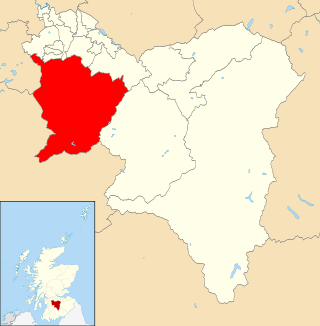
Avondale and Stonehouse is one of the 20 electoral wards of South Lanarkshire Council. Created in 2007, the ward initially elected four councillors using the single transferable vote electoral system before a boundary review in 2017 reduced the number of councillors to three. It covers an area with a population of 17,749 people.

East Kilbride West is one of the 20 electoral wards of South Lanarkshire Council. Created in 2007, the ward elects three councillors using the single transferable vote electoral system and covers an area with a population of 13,737 people.

Renfrewshire is one of the 32 council areas of Scotland, formally established in 1996 to succeed the Renfrew district within the Strathclyde region, both of which were abolished; the headquarters are at Paisley.

The 2022 Renfrewshire Council elections took place on 5 May 2022, as part of the 2022 Scottish local elections on the same day as the 31 other Scottish local authorities were up for election. The election used the 12 wards created under the Local Governance (Scotland) Act 2004 and last changed as part of the as a result of the 2015-16 Boundary Commission review, with 43 councillors being elected. Each ward elected either 3 or 4 members, using the STV electoral system.

Annick is one of the nine electoral wards of East Ayrshire Council. Created in 2007, the ward elects four councillors using the single transferable vote electoral system. Originally a three-member ward, Annick was increased in size following a boundary review and has elected four councillors since the 2017 East Ayrshire Council election.
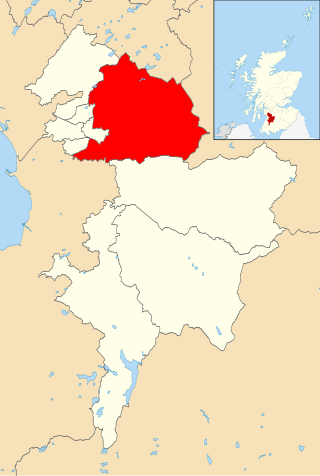
Irvine Valley is one of the nine electoral wards of East Ayrshire Council. Created in 2007, the ward elects three councillors using the single transferable vote electoral system. Originally a four-member ward, Irvine Valley was reduced in size following a boundary review and has elected three councillors since the 2017 East Ayrshire Council election.

Dalry and West Kilbride was one of the 10 wards used to elect members of North Ayrshire Council. Created in 2007 following the Fourth Statutory Reviews of Electoral Arrangements, the ward elected three councillors using the single transferable vote electoral system. As a result of the Islands (Scotland) Act 2018, the ward was abolished in 2022.
The 2022 East Renfrewshire Council election took place on 5 May 2022 on the same day as the 31 other Scottish local government elections. The election used the 5 wards created under the Local Governance (Scotland) Act 2004, with 18 councillors being elected. Each ward elected either 3 or 4 members, using the STV electoral system.


















